oil on canvas, 140 x 190 cm
Signed “Beppe Ciardi” on the lower left.
“The Sea” is a large painting by Beppe Ciardi, depicting a maritime landscape.
In this work we can identify a peculiar trait of the painter’s style: thick brushstrokes, with an impressionist flavour, characterised by a pictorial material that in this case becomes more full-bodied where the water is represented. The very vivid colours appear mixed directly on the canvas itself. In the foreground, on a pebble beach, the fishermen’s wives and children hurry to greet the men leaving for the sea, some with a wave of their hands, others by waving a handkerchief in the air.
Right on the boat, with its red sails patched here and there, six indistinguishable figures row,
rippling the rough and darting waves, rendered in motion by Ciardi with shades of light blue, cerulean and grey to which he adds small touches of warmer colours. The sea foam is accentuated by rivulets of pure white; in the background, the dead calm reflects, like a mirror, the shimmer of a warm winter day, almost as if the sky were the true protagonist of the painting.
It is dawn: the pink light of the rising sun reverberates on the clouds.
An individual on the left observes the scene from afar, while in the background, the boats in the distance are painted by the artist in an essential manner; the masts of the ships become incorporeal and only the hull and the sails remain visible of the structure.
This subject is taken up several times by the artist with various titles, including La separazione and I pescatori: Ciardi unrolls and rewinds the moment of farewell like the film of a movie; the same distant memory is repeated on canvas ad infinitum. The concept of departure manifests itself almost as an obsession in the painter, as does the sphere of human affections: this is demonstrated by the frequent presence of figures in his landscapes, which is not found in his father's paintings.
The work Il mare is present in the General Catalogue of Beppe Ciardi's works edited by Antonio Parronchi on page 241, plate no. 807.
BIOGRAPHY
Beppe Ciardi, registered as Giuseppe, was born in Venice in 1875. Son of an artist, his father was the landscape painter Guglielmo Ciardi, known mainly for his views of the Venetian lagoon. His younger sister, Emma Ciardi, also became an established and internationally appreciated painter.
Thanks to his father he had his first contact with painting, as demonstrated by a composition of three Alpine landscapes dated between 1888 and 1892, now preserved in a private foundation in Treviso. Despite the evident aptitude and precocious talent of his son, Guglielmo did not approve of his son's future as an artist, preferring instead a scientific career; Beppe was forced to enroll in the Faculty of Natural Sciences at the University of Padua, attending for three years. Preceded by the fame of Guglielmo, who in the meantime had been appointed professor of Landscape at the Royal Institute of Fine Arts in Venice, Beppe made his debut at the second edition of the Milan Triennale with some studies from life.
In the meantime, he neglected his university studies to devote more and more time to painting: in 1896 he left the university to enter the institution where his father taught, choosing however not to follow his course; instead he enrolled in Figure Drawing, whose chair at that time was entrusted to the painter Ettore Tito. The same year he presented himself at the International Exhibition of Art and Flowers in Florence with two still lifes, Giorno di pioggia and Interno di cucina (today unfortunately lost): a singular choice, a sign of a still very young artist, dedicated to an artistic experimentation that included both genres and pictorial techniques.
In 1897 Beppe Ciardi met a girl of working-class extraction, who worked as a pearl threader to support her family financially: Emilia Rizzotti.
Guglielmo's father's resistance was in vain and, to dissuade his son from marriage, he sent him first to a place in the Dolomites and then to Rome to study the landscapes.
At the 3rd Venice Biennale in 1899, in which both father and son participated, Beppe made his national debut with the triptych Terra in fiore e Monte Rosa, a painting of a fair size.
After completing his studies at the Academy, Beppe began to devote himself to portraiture, both family and commissioned, and to genre scenes in the open air. The landscape continued to be present, but in a more toned-down way: it served as a backdrop to tender moments of childhood, featuring little girls intent on their games (as in Fiori di prato, around 1900) or young rascals (Il bagno or Ragazzi sul fiume, 1899). The life studies of the Roman countryside and the rural life of the common people were later used by the artist for the triptych La parabola delle agnelle, presented at the Milan Triennale in 1900 and for which the painter was awarded.
In 1902, the first article entirely dedicated to the artist appeared in the magazine “Natura e Arte”, complete with an interview in which the uncertainty of a budding painter emerges, as well as a marked interest in the figure, not present in Guglielmo’s artistic repertoire and probably a way to distinguish himself and emancipate himself from the now cumbersome shadow of his father’s figure. However, Beppe does not abandon the landscape, on the contrary: he expresses it in its analytical version, synthesizing it with an earthy palette, made of browns and olive greens, as is evident in the works executed in Canove, on the Asiago Plateau, where the Ciardis spend the spring.
During this time Beppe faced a symbolist parenthesis, in which a reference to German painting is evident, especially that of the painter Arnold Bocklin, as in Garden in the Moonlight (1900); however, contemporary critics did not welcome his works with a more Nordic drift, so much so that three of his paintings were rejected by the commission of the 5th Venice Biennale in 1903.
An artist with a mild but shy and introverted character, he preferred a quiet existence to the social life of his colleagues, continually dedicated to painting (as his sister Emma would also do) and to the en plein air study of mountain and lagoon landscapes. Among the tools Beppe used, like other contemporaries, was photography, which however he used for the purpose of studying the painting, not reality, unlike his sister Emma.
Between 1905 and 1907 the artist returned to the spring setting from his beginnings, dedicating himself to a series of canvases where the predominant theme was once again childhood; laughing children, flowers and almond trees often appear, as in Farfalle o Sorrisi, exhibited at the 7th Edition of the Venice Biennale. The opinion of contemporary critics oscillates between little consideration and sincere appreciation, such as what Ugo Ojetti wrote about Beppe in 1911 for the daily “Corriere della Sera”, defining him as « [...] a master of rude sincerity, one of the very few young painters who work [...] for the love of work and for themselves. [...] ».
An artist with a shy and introverted personality, his works clearly show a continuous conceptual reflection on human emotions and the bonds that they intertwine, as can be seen from the presence of numerous versions of canvases regarding the themes of motherhood, departure, but also of spring as a symbol of youth and rebirth.
With Italy’s entry into the war in 1915, the Ciardis retired to their home in Quinto di Treviso; the following year Guglielmo, Beppe and Emma exhibited at the show named after them at the Galleria Centrale d’Arte in Milan, where our painter achieved great success.
In 1917 Guglielmo Ciardi passed away at the age of seventy-six. The families were forced to leave their home, which had been confiscated by the state to make it a field hospital for soldiers; Beppe took refuge with his wife and daughter in Lugo, in the province of Ravenna. During this period he did not depict the scenarios and impressions of the war, as his sister did. Shortly before the end of the conflict he was called up for military service, only to be exempted for patrimonial reasons; in 1918 he fell ill with Spanish Flu but recovered and, having settled in Venice, returned to painting.
During the 1920s he reached artistic maturity: his brushstrokes were snappy and fragmented, the application was full of pictorial matter; the sky remained a constant as «[...] the very subject of the painting. [...] » (U. Ojetti).
In 1920 he curated a retrospective exhibition on Guglielmo Ciardi at the Biennale and in the following years he donated a precious collection of his father's works to the Galleria d'Arte Moderna in Venice.
He returned several times to the Asiago plateau, which bore the signs of war clashes but of which Beppe once again wanted to represent the naturalistic aspect, often recovering the very dear subject of grazing animals as in Peace on the Plateau (1922).
In 1924 the artist was appointed member of the Board of Directors of the Biennale, and then inaugurated a small solo exhibition at the Galleria Corona in Naples; in that same year he painted his most famous Self-portrait, now preserved at the Uffizi: depicted in the guise of a painter, with palette and easel, the figure of Beppe is immersed in that rural landscape that has characterized his work for decades.
During the last years of his life, the artist's style became immediate and synthetic, the landscapes represent an uncontaminated and impervious, acrid nature (Sunset on the Sile, 1928); the brushstroke, on the contrary, became dense and stratified, divided into filaments of colors, in a very personal interpretation of divisionism.
He painted relentlessly, as if he knew he had little time left to live: he was now an established artist, who organized solo exhibitions at a national level, in galleries throughout the territory.
In 1932 he participated in his last Biennale with three large-scale works, depicting a view of the Piave River, a seascape and a scene of rural life; he passed away that same year.
Upon his death, his beloved wife Emilia created a collection at their villa in Quinto Treviso; in 1936 the art historian G. Nicodemi curated the first major posthumous exhibition on the artist at the Castello Sforzesco in Milan, and then wrote Beppe Ciardi in 1942, the richest monograph of its time, complete with color plates.
His canvases are now stored in the most important national and international museums and are highly sought after by private collectors.













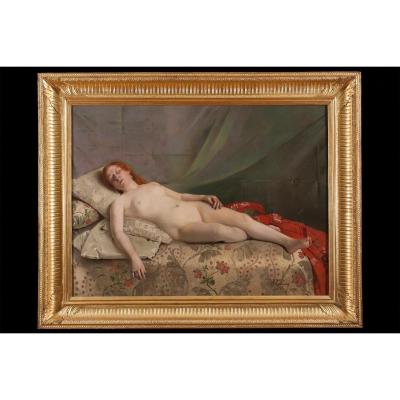
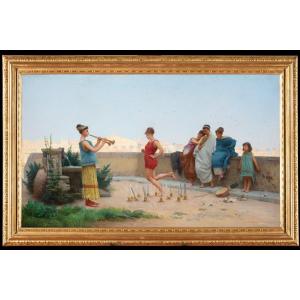
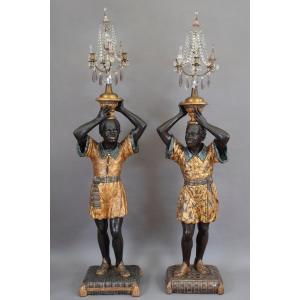



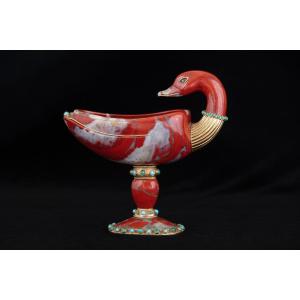



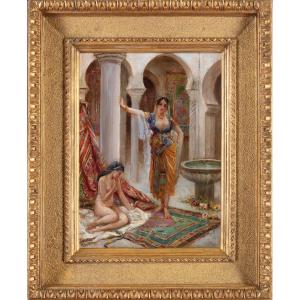
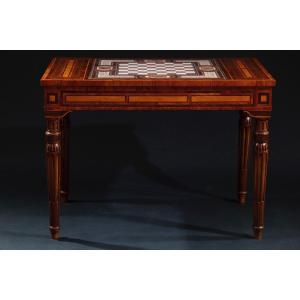


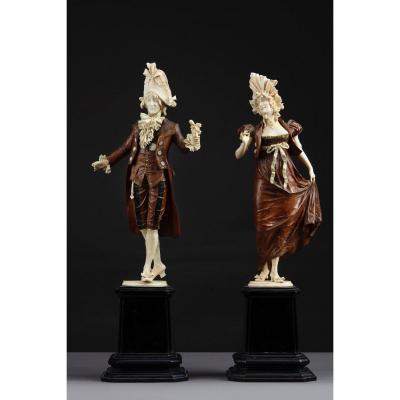
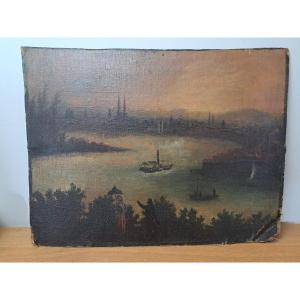
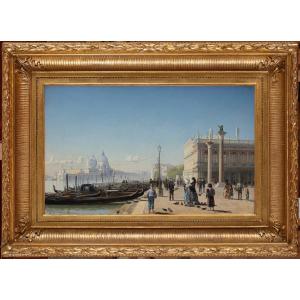

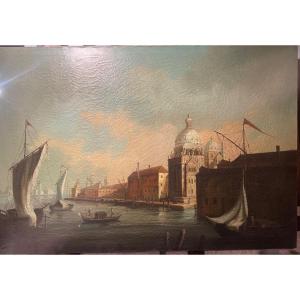




 Le Magazine de PROANTIC
Le Magazine de PROANTIC TRÉSORS Magazine
TRÉSORS Magazine Rivista Artiquariato
Rivista Artiquariato